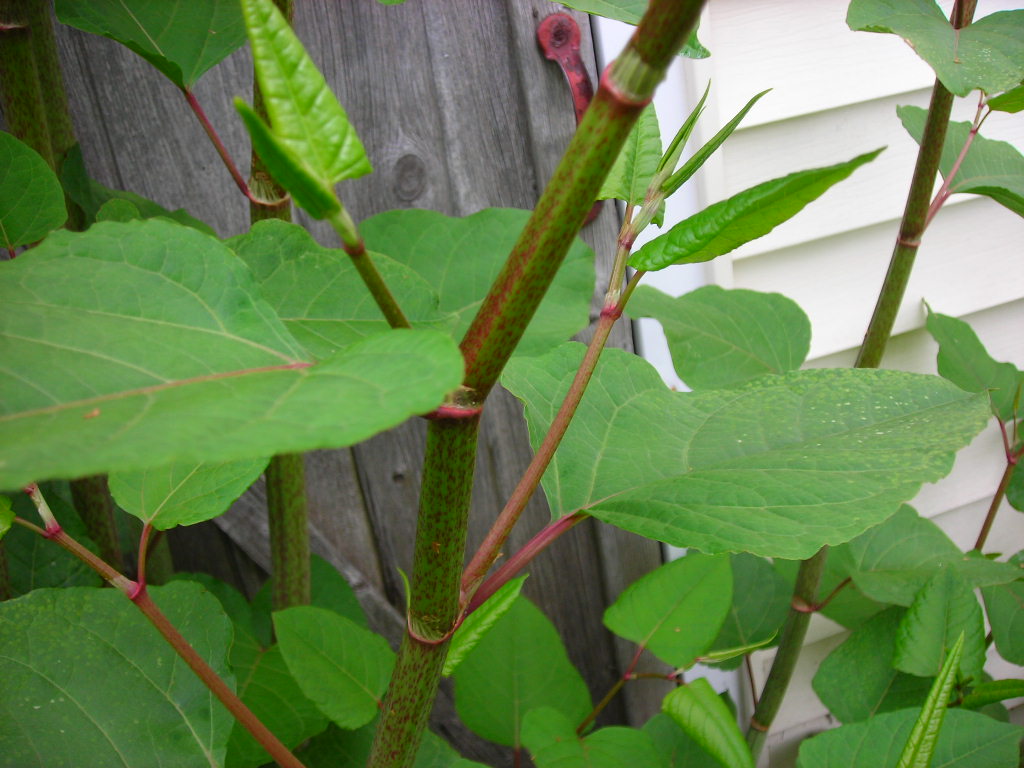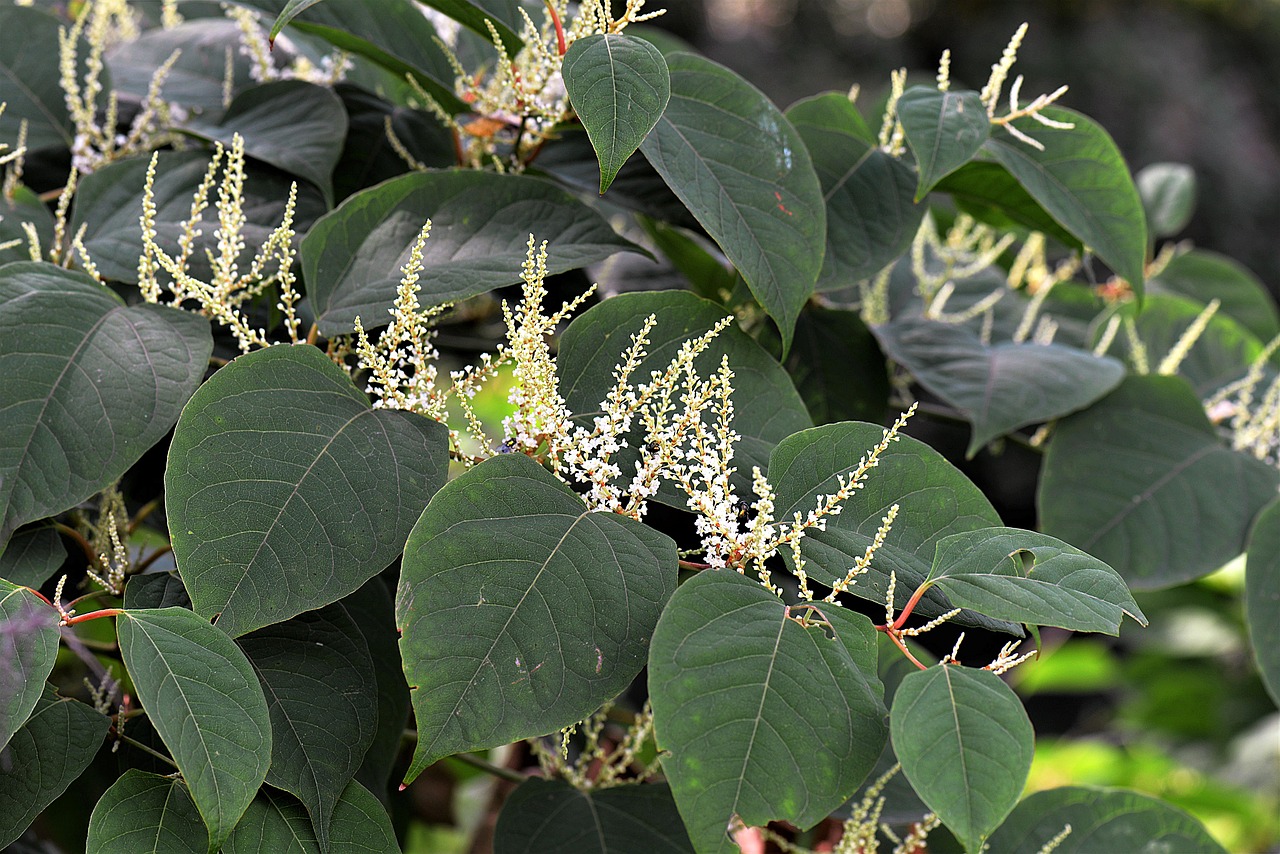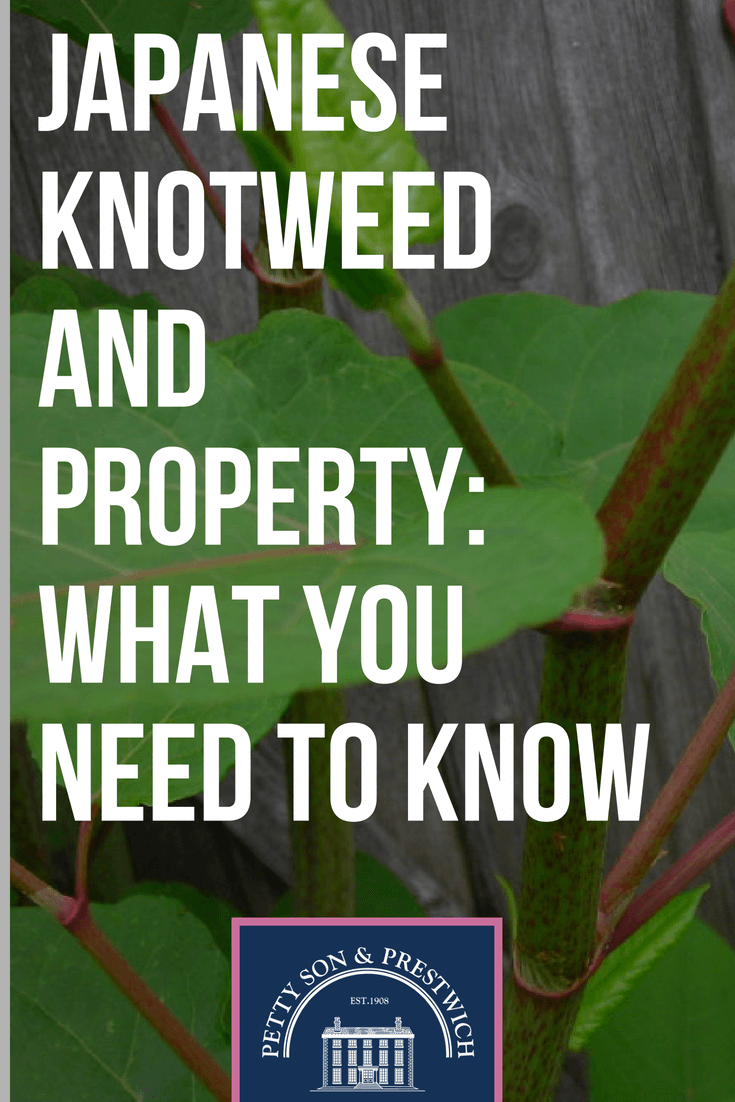You may have heard the name before, but do you know how Japanese knotweed can affect your property or a home you are thinking of buying? In this article, we’ll attempt to untangle myths from facts so that you’ll be better equipped to tackle this notorious plant, whether you are a homeowner or prospective buyer.
Let’s get started!
What is Japanese knotweed?
Otherwise known as Fallopia japonica, Japanese knotweed is an introduced species which was brought to Europe as an ornamental garden plant in the mid-19th century by German-born botanist Phillipp von Siebold. This highly invasive weed does especially well wherever water is in abundance, so it is often spotted along riverbanks, canal sides, and around lakes and ponds. It is, however, also found regularly in residential gardens throughout the UK.
Its perennial, hardy nature means just the tiniest piece of root will be enough to see it return year after year. The resilience of knotweed is just part of the problem, though. With growth spurts of up to 20cm per day, Japanese knotweed can reach heights of up to 3m (10ft) during the summer months and its rapid development can overwhelm even large open spaces in a very short space of time.
Identifying Japanese knotweed
Spotting Japanese knotweed can be difficult even for the avid amatuer gardeners, thanks largely to its general ‘weedy’ appearance that makes it hard to distinguish from other wild plants. There are, however, a few key characteristics you can look out for:
- Large shovel, or heart, shaped leaves
- Leaves commonly form a zig-zag pattern up the stem
- Stems have a bamboo-like look about them, with characteristic rings along their length
- Stems will also sport purple spots and are noticeably hollow when cut
Early buds and shoots start appearing between February and March and have a reddish hue to them. These shoots form the stems, which, once established, can be identified by their purple specks and bamboo cane-like appearance.
Leaves can be as large as 14cm long and will start life with a yellowy-brown colouration before turning a rich, deep green at the height of summer. As the warmer months draw to a close and autumn takes hold, the plant will produce tiny groups of off-white flowers that are around 0.5cm wide, with the clusters covering around 10cm.

Sniff it out
Another, and altogether more fun to watch, way to detect Japanese knotweed is to use a specially trained sniffer dog. Naturally, it's unlikely you'll have one of those at your disposal, but it doesn't mean we can't enjoy watching them in action.
Check 'em out!
How common is it?
It largely depends upon whereabouts you are in the country, but Japanese knotweed is thought to affect anywhere between 1% and 5% of English properties. London and the South East are heavily affected, as are South Wales, the Midlands, and parts of the North West, especially Liverpool.
Its rapid spread is thought to be exacerbated by illegal dumping of garden waste, which is often done in quiet rural areas or parts of the countryside where fly-tippers feel they can get away with their crimes. From there, Japanese knotweed can take hold and move across large expanses, out-competing and destroying native plant species before eventually making its way to residential areas and gardens. Its presence is also thought to have a dramatic impact on indigenous wildlife, too.
Can Japanese knotweed cause property damage?
In short, yes. Japanese knotweed is a hardy beast, and it has been known to cause all manner of structural damage. Some of its most common victims include: driveways, asphalt coverings, drainage systems, and garden walls. There have even been a few instances of the weed making its way through cavity walls!
That being said, structural damage by Japanese knotweed is relatively rare...despite what you may have read in the property section of your favourite newspaper. The truth is that this ‘invading’ species makes for a good story when other news may be a little light.
This is not to say that ignoring Japanese knotweed is a good idea - you should indeed take it seriously and deal with it if found on your property - but do be aware that there has been more than a little over-reaction to the problem in certain sections of the media.
Can Japanese knotweed affect the value of my home?
Unfortunately, yes, and in some instances it can run into tens of thousands of pounds. If an infestation has been ignored and left to mature, the value of the property will definitely suffer. This is largely because, as stated above, if left to its own devices, Japanese knotweed can cause significant structural damage. Another, more unfortunate, factor is the scaremongering that has gone on over the last decade or so.
Yes, Japanese knotweed is a serious problem, but it’s not entirely unresolvable, nor is it prohibitively expensive to eradicate, providing it’s caught early enough. With a proper management plan in place, sellers should expect their property price to drop by a figure in line with the cost of treatment, and no more.
Will a surveyor tell me about Japanese knotweed?
If you employ a surveyor to give your prospective property purchase the once over, then yes, they should spot any signs of Japanese knotweed and inform you of its presence. It’s worth bearing in mind, however, that your lender will not flag the issue when conducting a mortgage valuation.
Many buyers mistakenly believe that mortgage valuation surveys are the same as a property survey you’d instruct a surveyor to carry out, but the truth is that valuation surveys are conducted for the lender’s benefit, not yours. Therefore, paying a reputable chartered surveyor to carry out a full survey is well worth the extra expense and should be something the majority of buyers consider before making their next property purchase.
Do I need to tell buyers I have Japanese knotweed?
What about sellers who already know they have Japanese knotweed on their property? Do they have an obligation to tell the seller about its presence? The answer is simple: yes, they do.
Failing to disclose the presence of Japanese knotweed could land the seller in court for misrepresentation, so honesty is by far the best policy.
What happens if my neighbour has Japanese knotweed?

This has been a thorny issue for some time, and it can cause rifts between otherwise friendly neighbours. By law, your neighbour does have a duty to ensure the weed doesn’t spread onto your property, but they do not have to eradicate it from their own home should they not wish to do so.
The biggest problem with this obviously comes when you want to sell and your next door neighbour has bushes of the stuff in plain sight. Lenders may refuse to entertain buyers who are looking for loans, which effectively leaves your property in the doldrums until a cash buyer comes along...and they are probably going to offer significantly less than you’re asking because of the weed’s presence.
So, what to do?
As the person who wishes to sell, its really going to fall on you to address the problem. Everyone bar the law appreciates that this shouldn’t be the case, but it’s an unfortunate truth. You could open dialogue with your neighbour and explain about the potential damage Japanese knotweed can cause to their property in the hope that they will take steps towards eradicating the plant. However, in many instances this will fall on deaf ears, especially if they’re already aware of the problem weed and haven’t yet taken steps to remove it.
Should negotiations fail and your neighbour flat out refuses to do anything about their weed problem, it may be a good idea to offer to pay for its eradication yourself. Yes, it’s unfair, but an extermination bill compared to not selling your home could, in the grand scheme of things, be a small price to pay.
How to get rid of Japanese knotweed
DIY eradication attempts are usually a waste of time. Japanese knotweed is extremely hardy and can even lay dormant for anywhere up to 20 years before resurfacing. Many make the mistake of cutting back the visible parts of the plant, thinking that they have gotten rid of it, only to realise that what they’ve actually done is stimulate the weed and made it even stronger than it was before.
Garden centres will happily sell you Japanese knotweed sprays and weed killers but, unless used properly, these can be just as hopeless as trying to dig the plant up or cutting it back. In truth, the best way to treat Japanese knotweed is to employ a firm that specialises in the eradication of this pernicious plant.
Does my buildings insurance cover Japanese knotweed removal?
So, if professional removal is the best option, does your buildings insurance cover Japanese knotweed removal? As one might expect, to give a definitive answer here is nigh on impossible, as everyone’s policy will be different, but it’s highly unlikely your insurance cover will extend to Japanese knotweed treatment.
When it comes to taking out insurance, you do not need to disclose the presence of Japanese knotweed if you are not asked about it. However, should you choose not to disclose it and the weed causes damage to your property, your insurer may well refuse to pay out on any damages claims you may make.
This is because you are under obligation to do all that is within your power to prevent any damage happening to your property...and failing to treat Japanese knotweed can certainly fall into this category.
Will I get a mortgage on a property with Japanese knotweed?
As we touched upon above, mortgage lenders aren’t exactly keen on Fallopia japonica. Many will refuse to lend on properties affected by knotweed, and some will also say no to those whose neighbours have signs of the plant in their gardens, too.
That’s not to say that all is lost, though. Most lenders will be reasonable with buyers and issue mortgages to those who can demonstrate that they have a management plan in place. Proof that a professional Japanese knotweed eradication firm is dealing with the problem will help show that the plant isn’t being left to its own devices.
Proving that steps are being taken to remove the weed from your new property should help sway your lender and get you the mortgage you need in order to buy the home you have set your heart on.

Image sources with thanks:
Phillipp von Siebold portrait by Unknown, "E. Chargouey" (Siebold collection at Naturalis) [Public domain], via Wikimedia Commons
Knotweed by Ancatdubh43 at English Wikipedia [Public domain], via Wikimedia Commons
Property with japanese knotweed by MdE (page at dewiki | page at commons) (own photo) [CC BY-SA 3.0 de (https://creativecommons.org/licenses/by-sa/3.0/de/deed.en)], via Wikimedia Commons
